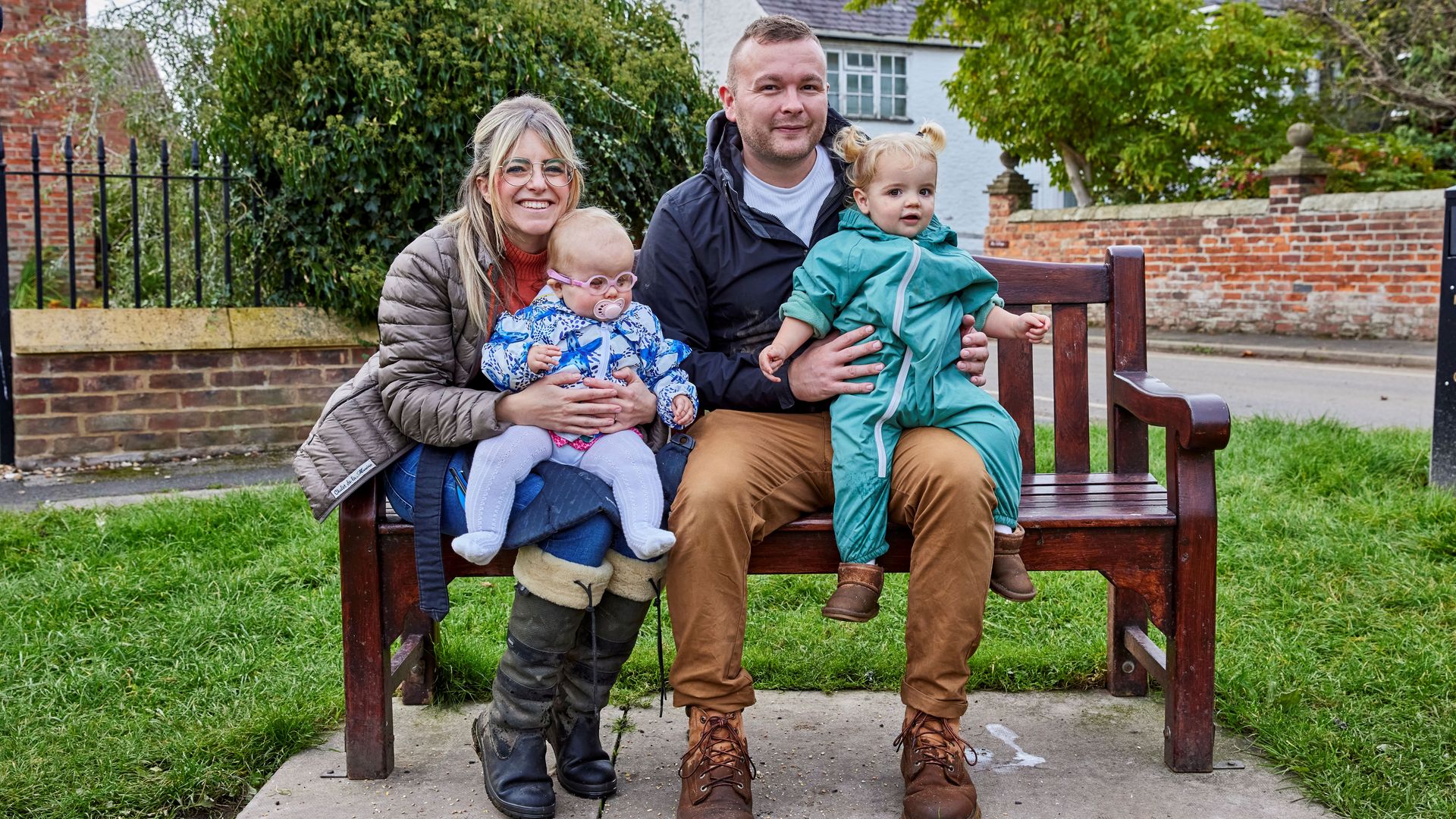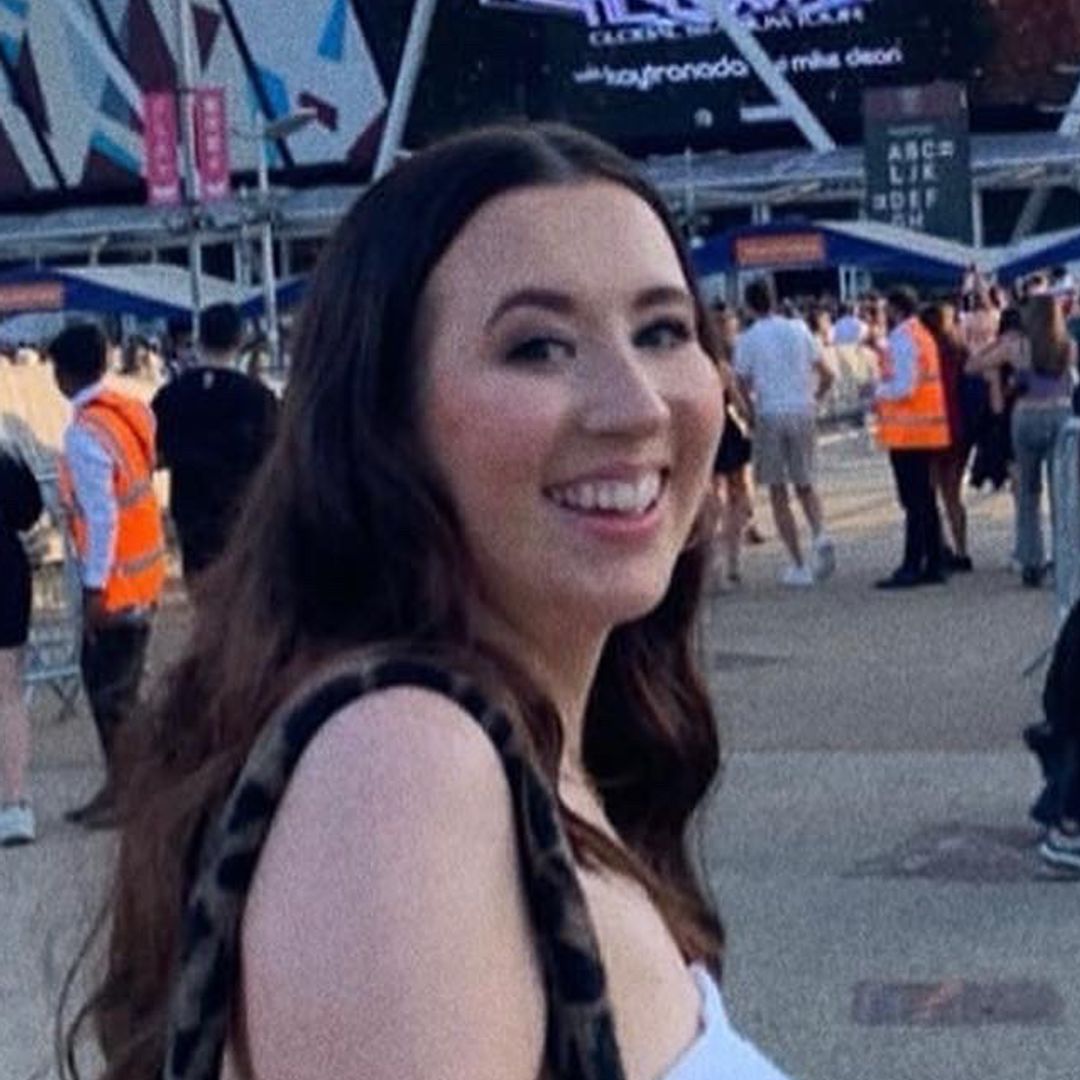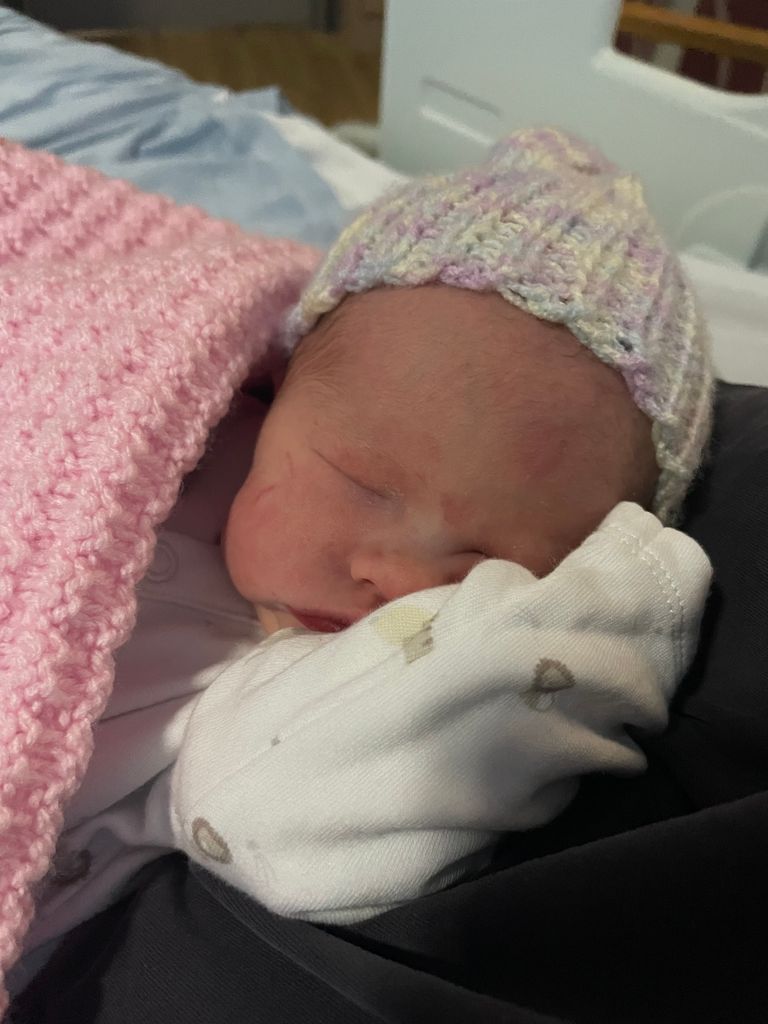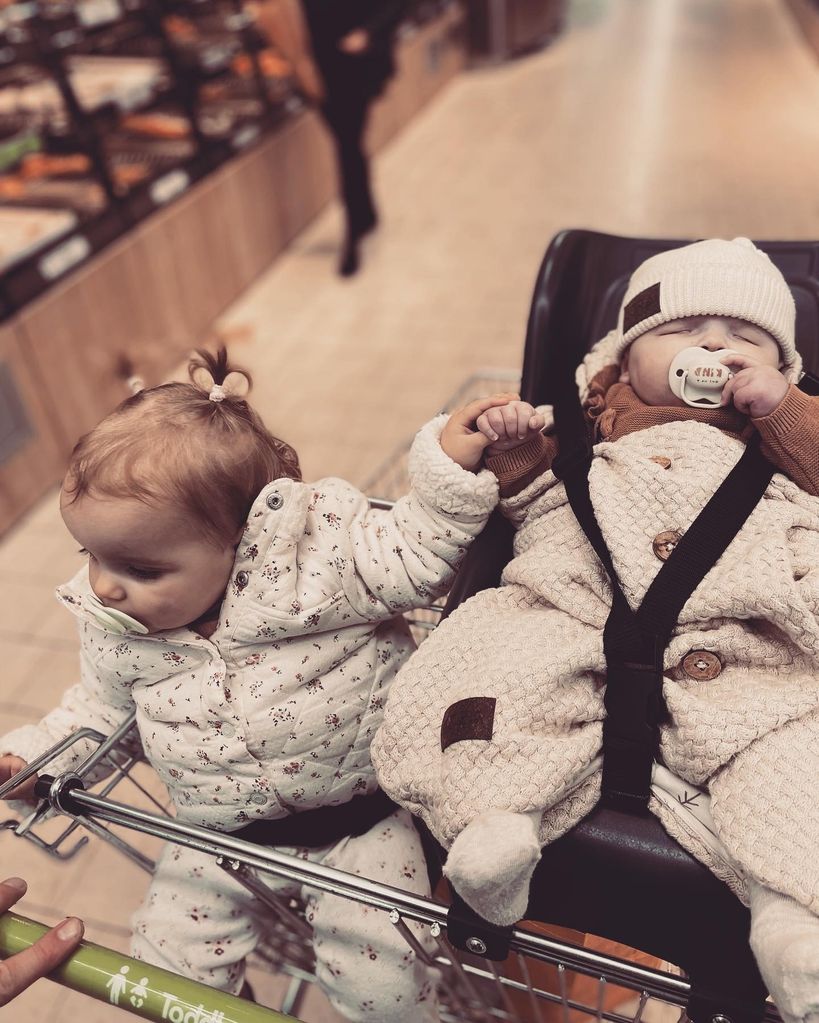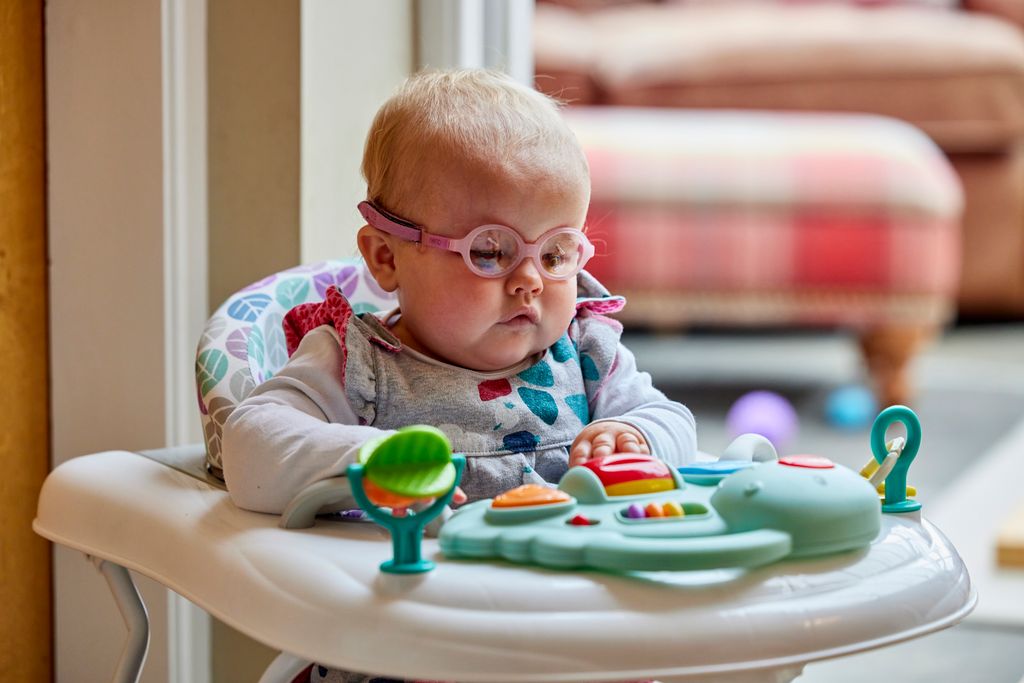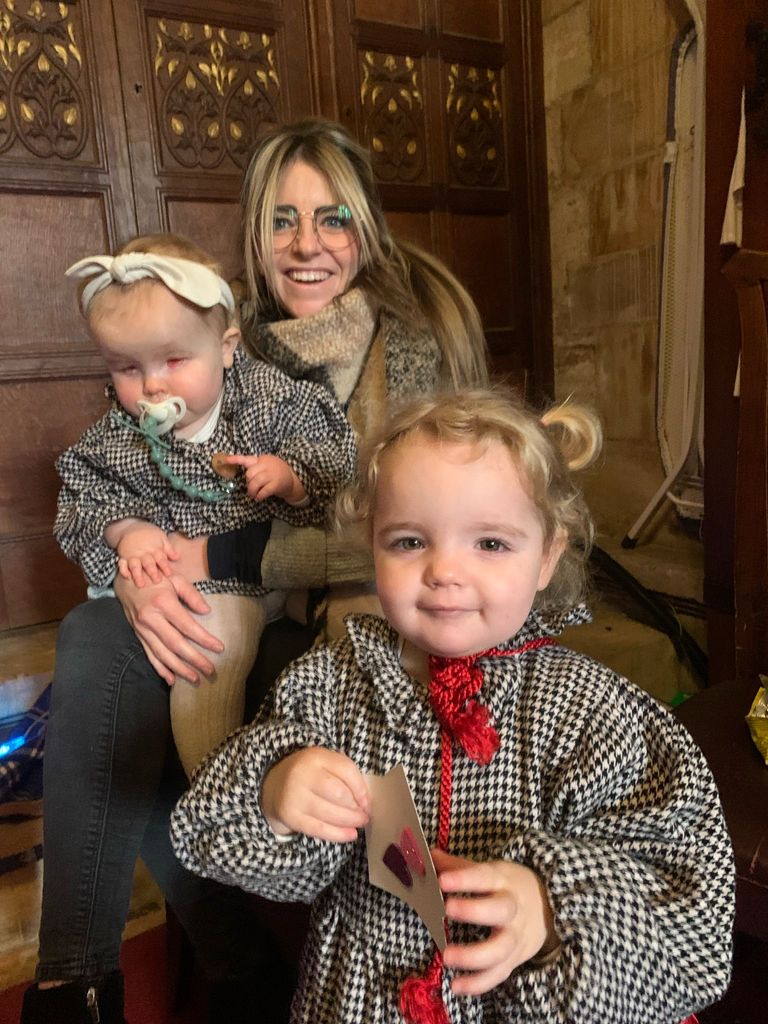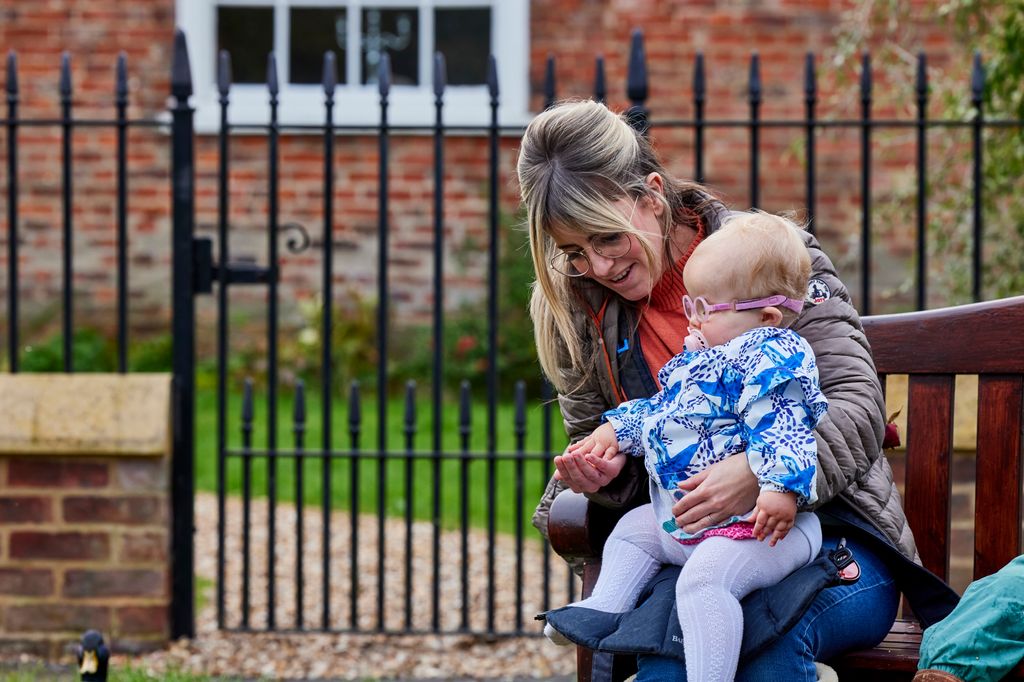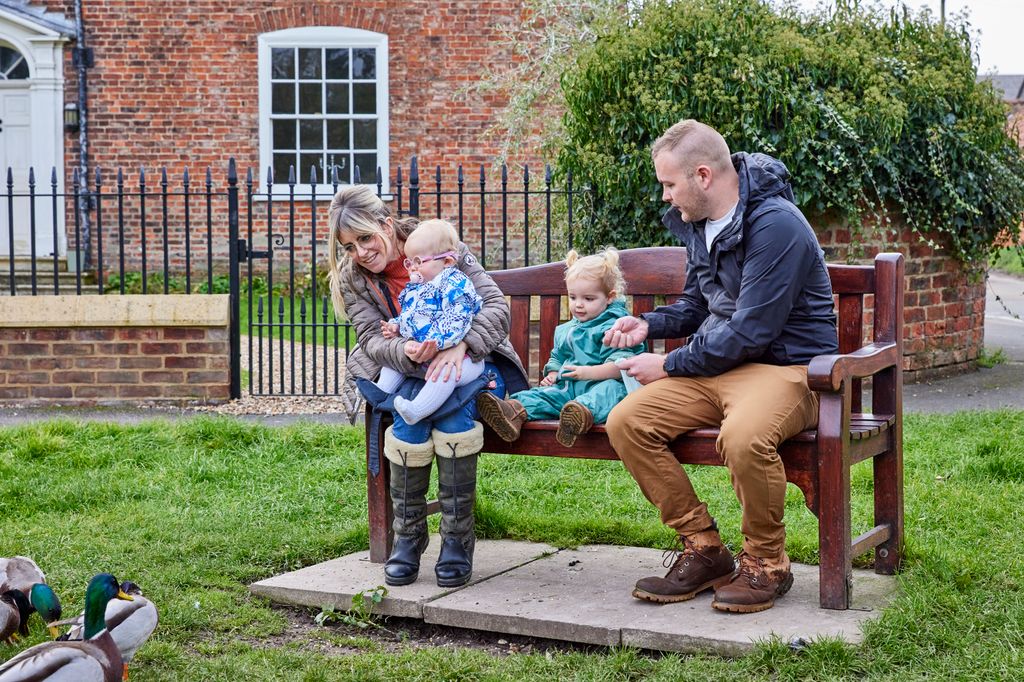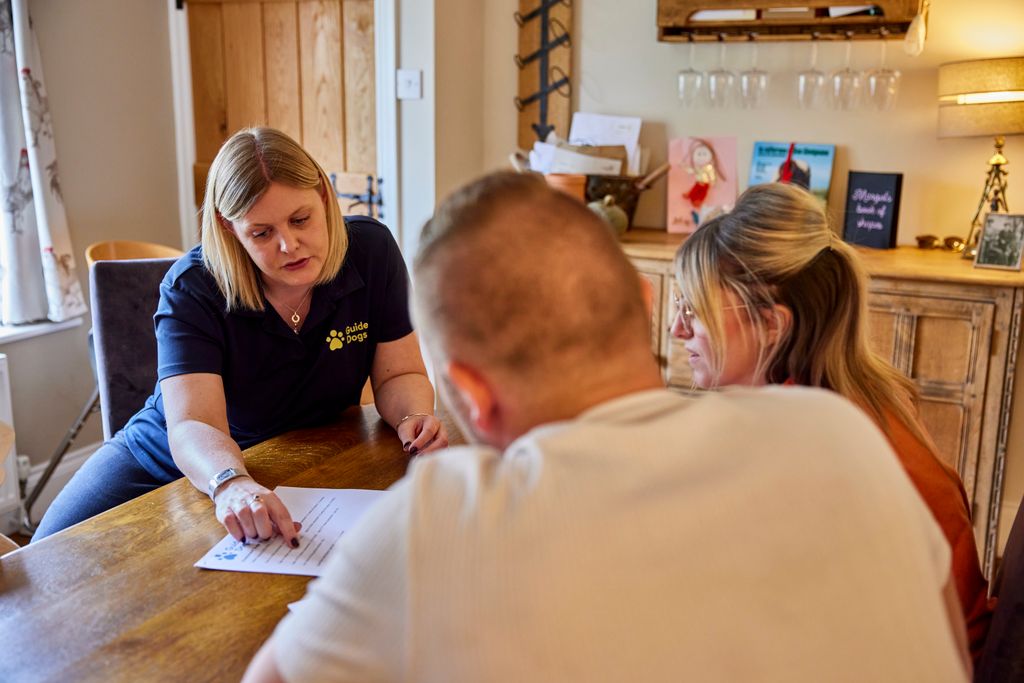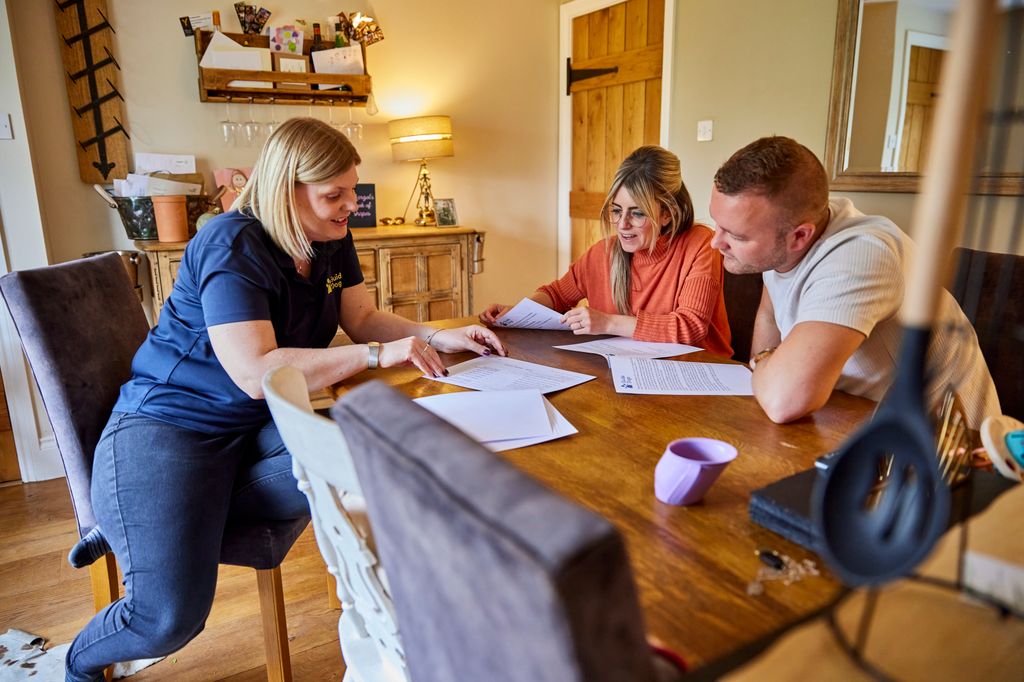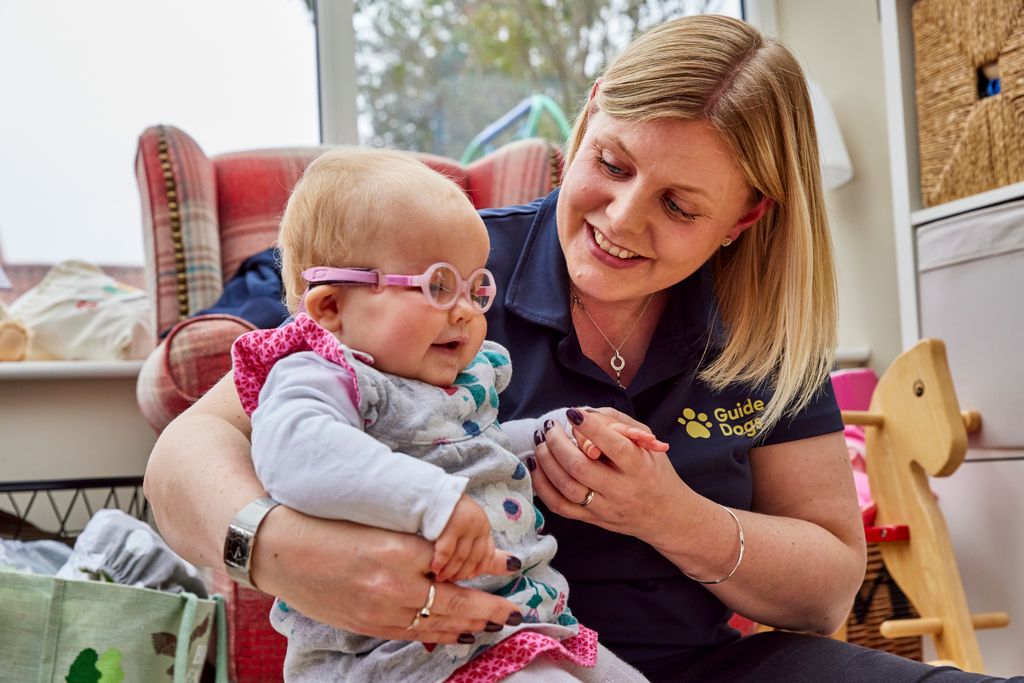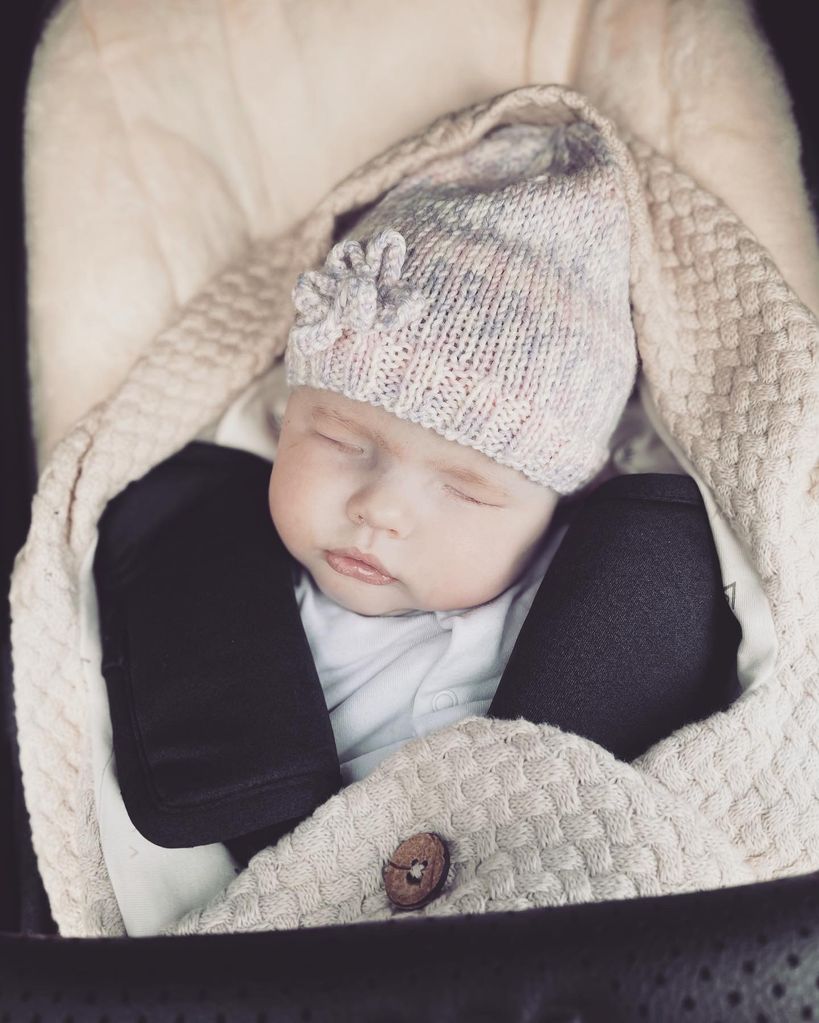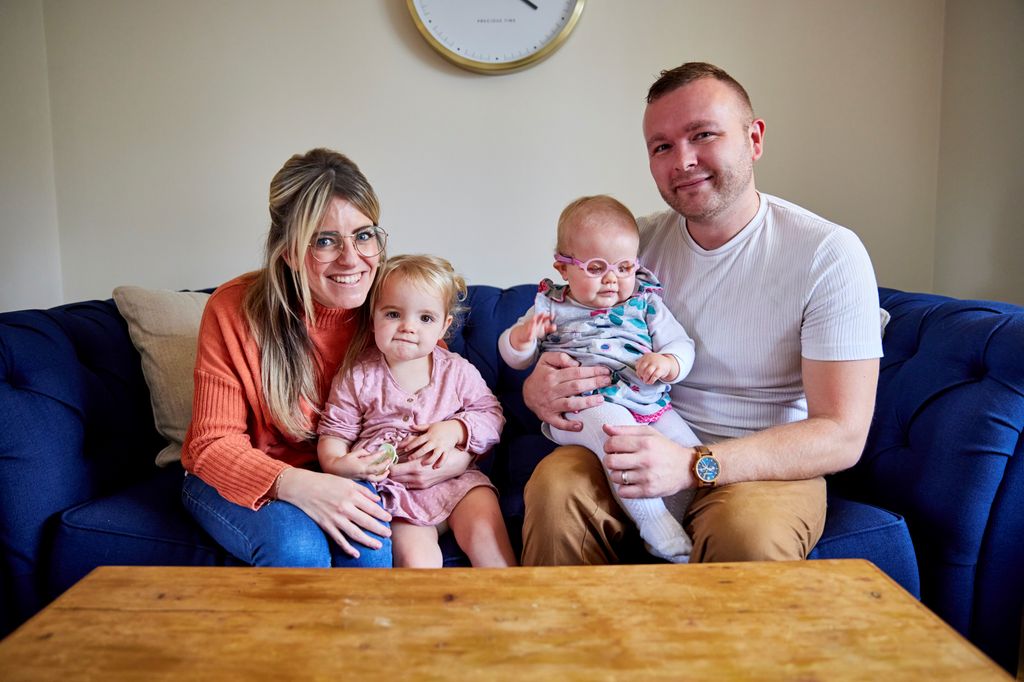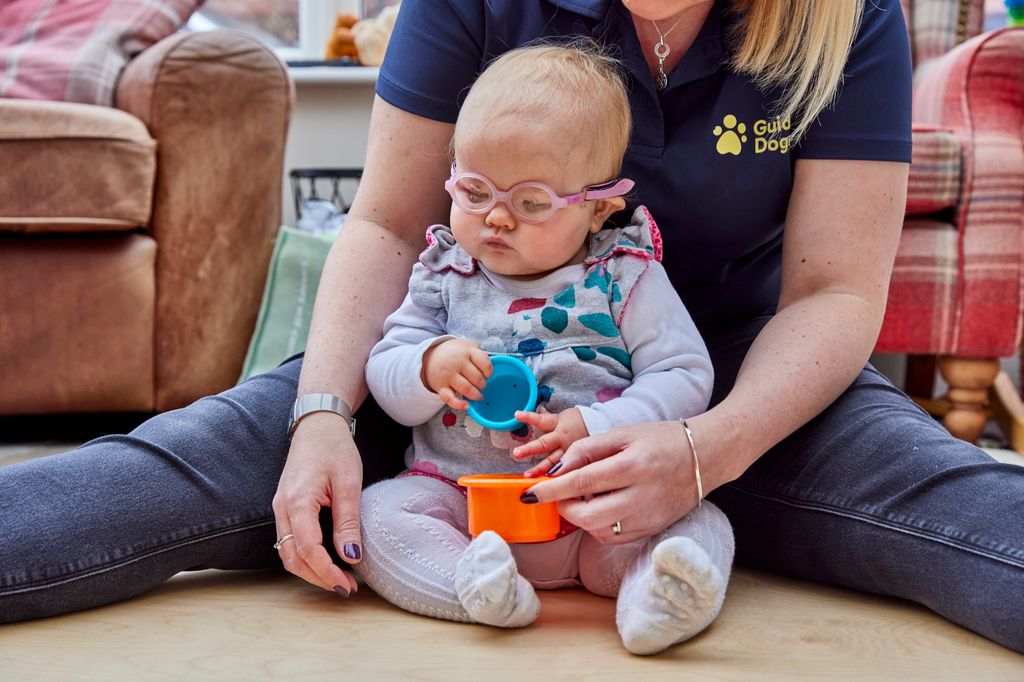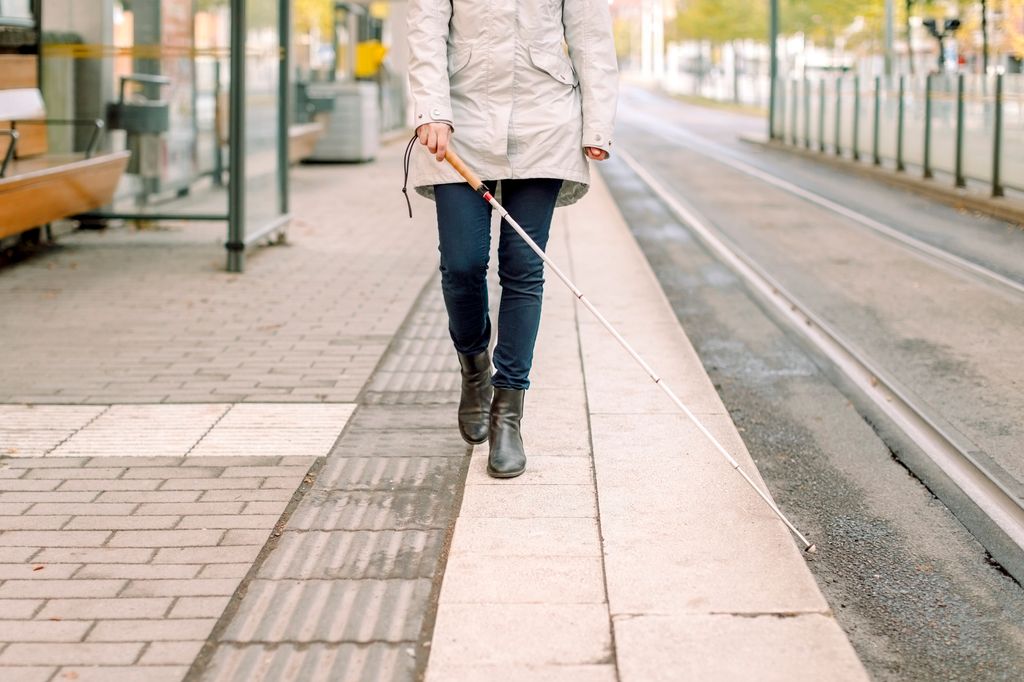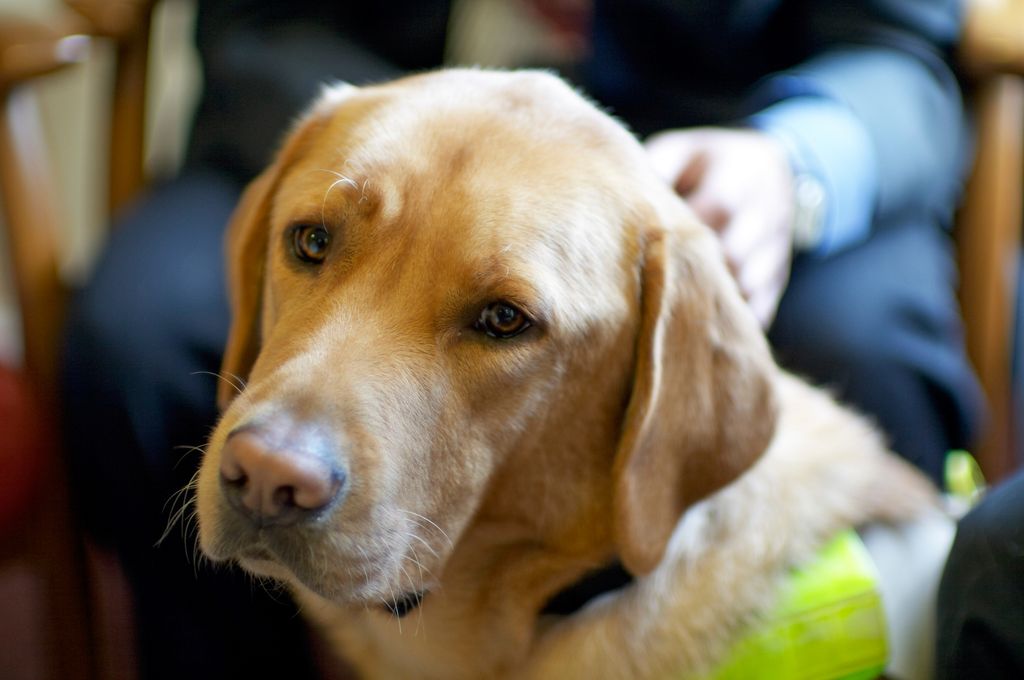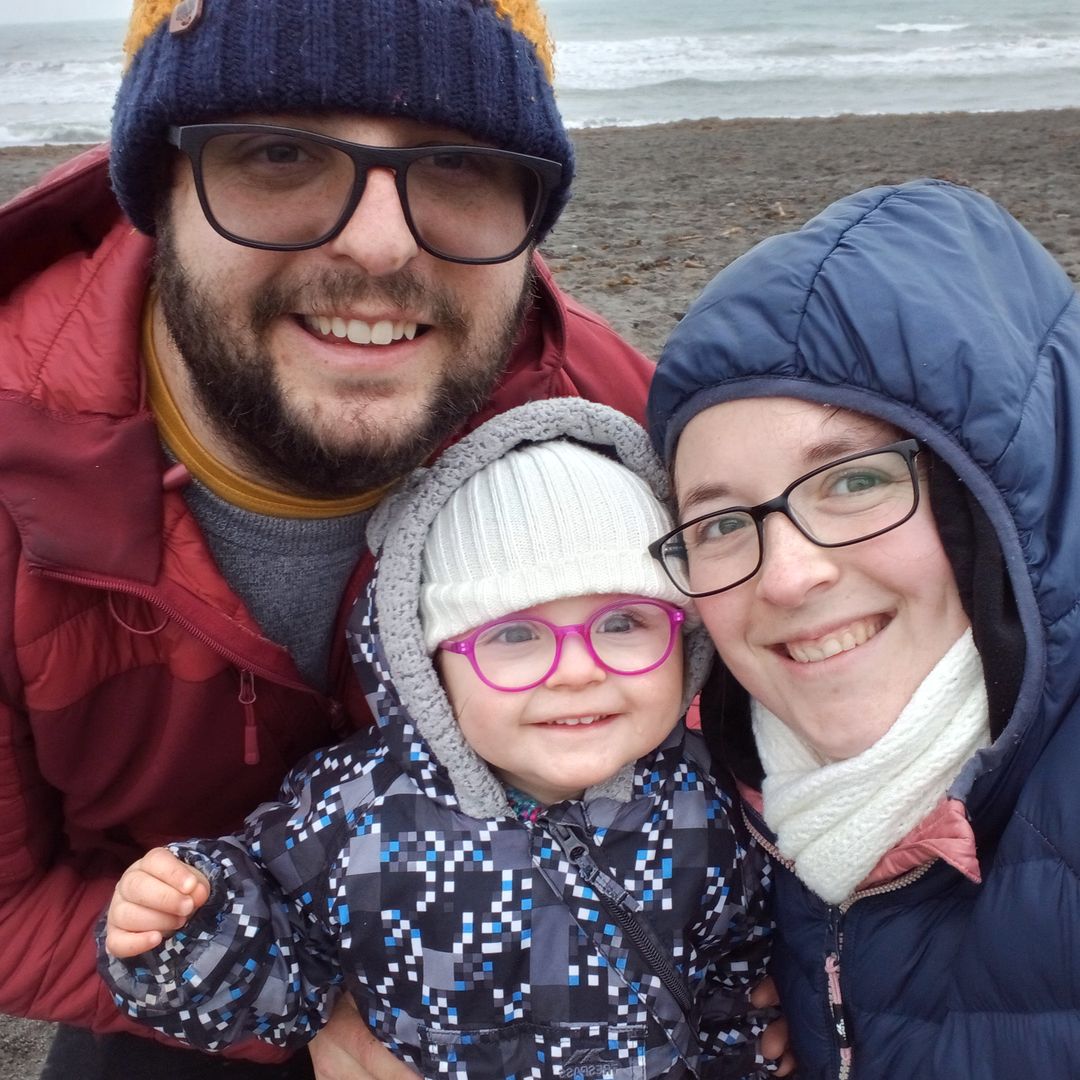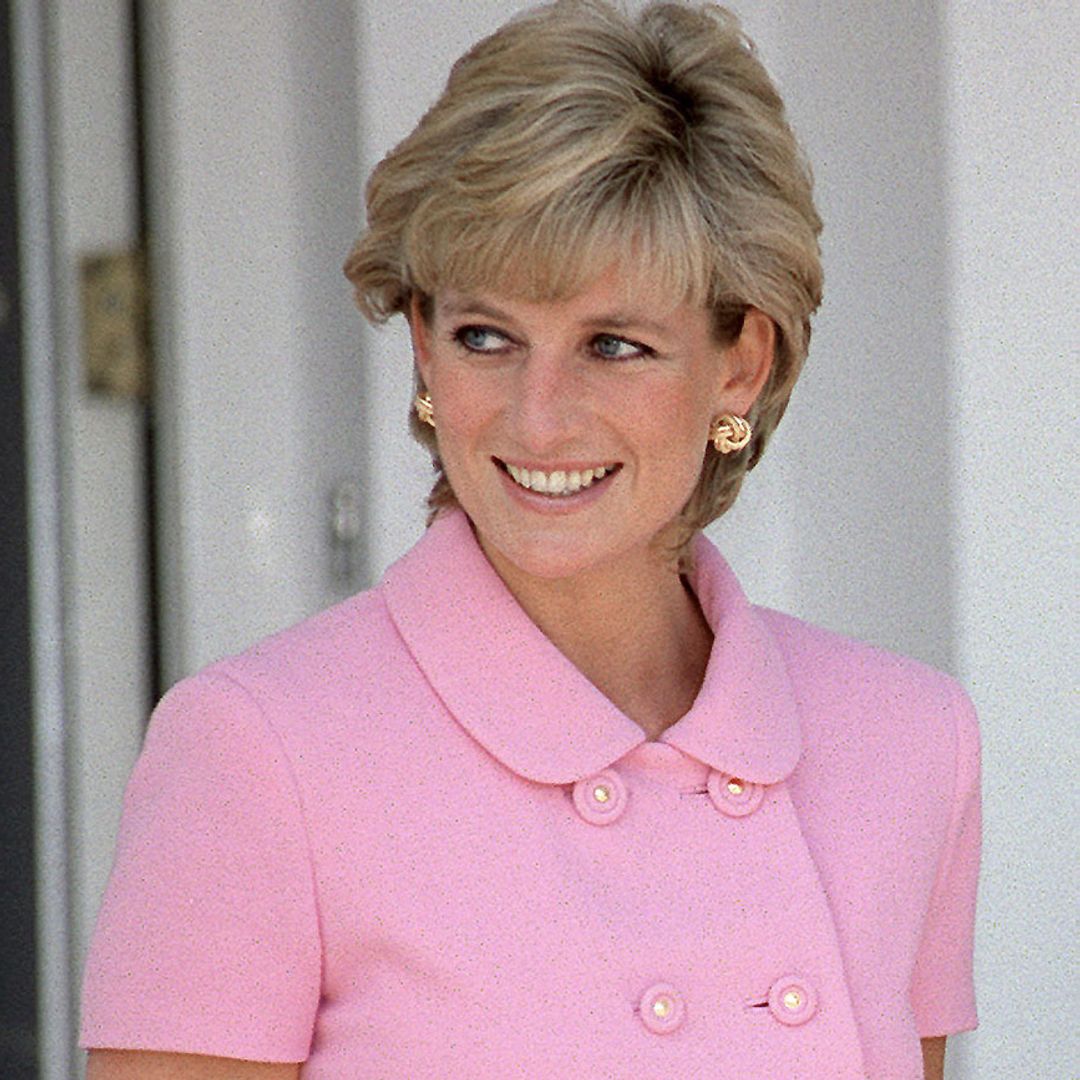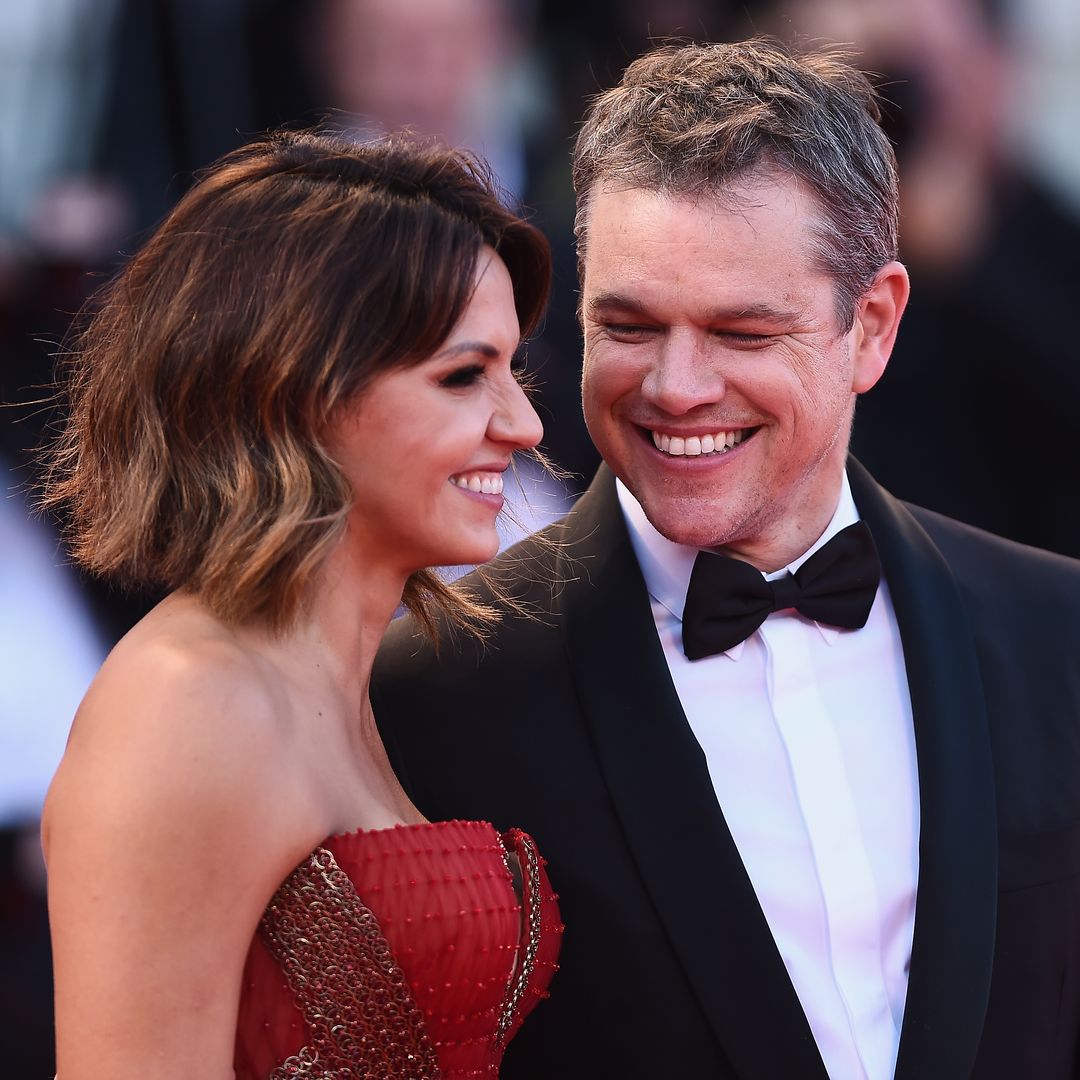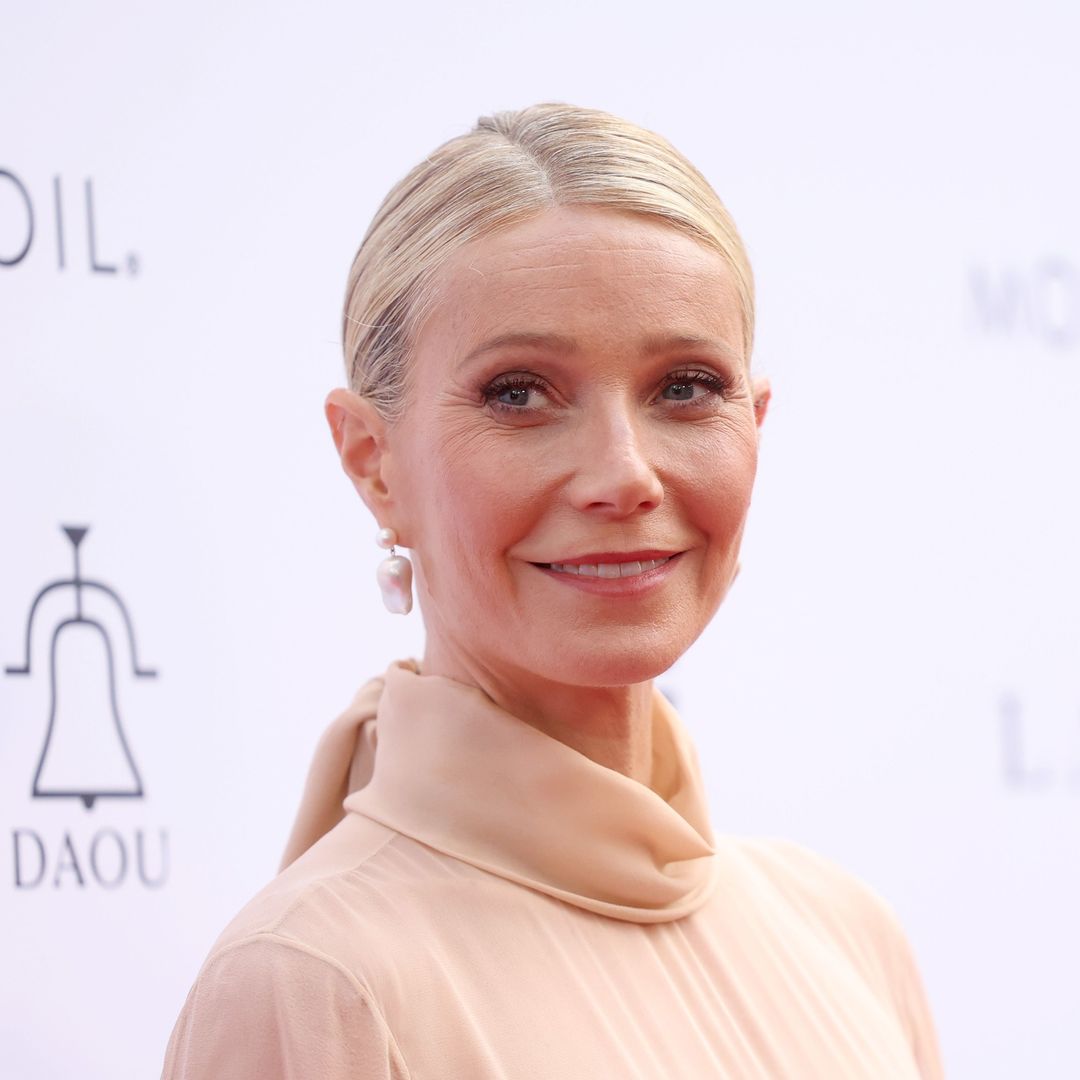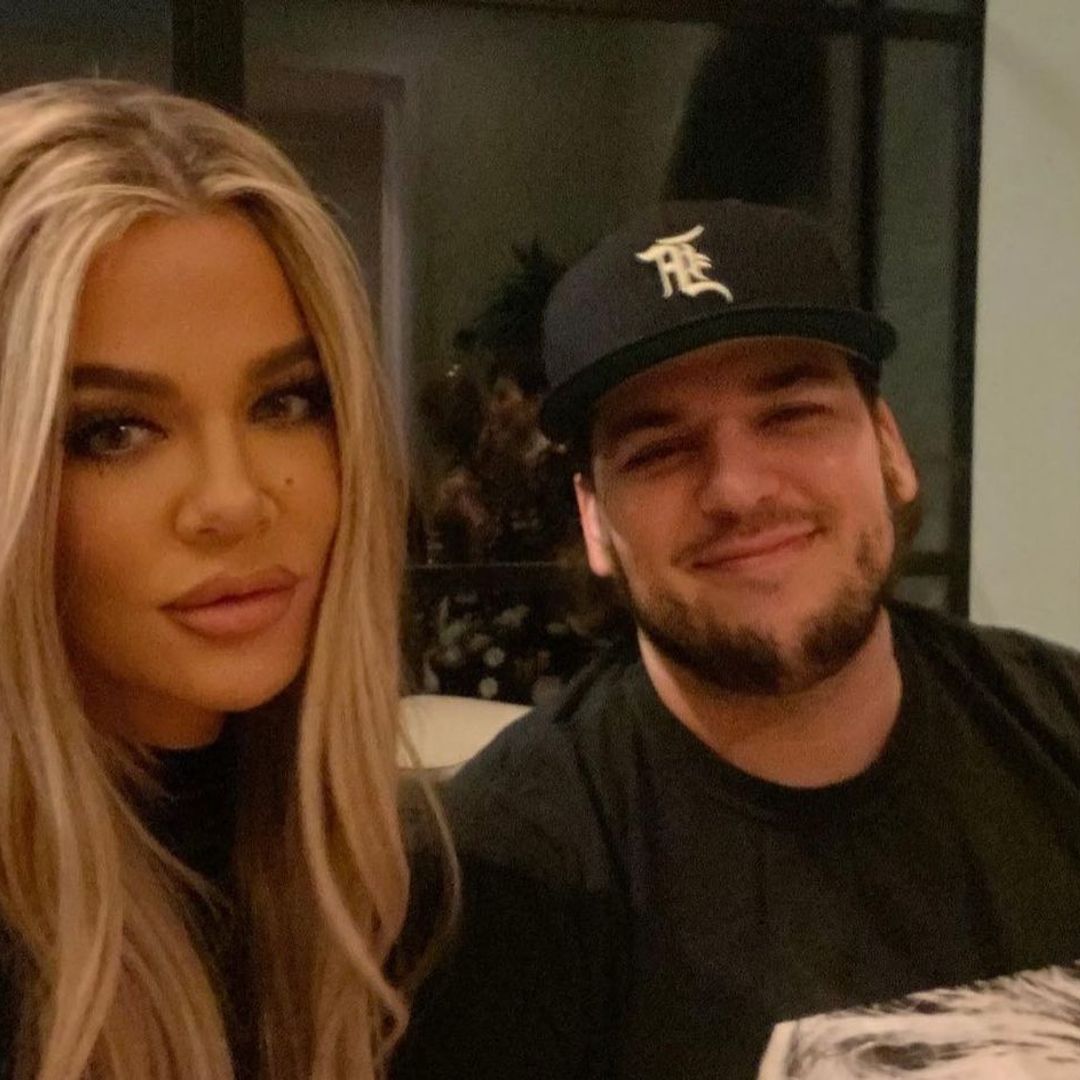Margot Duffy-Moss is like any other 16-month-old - a smiling bundle of energy who, according to her doting parents, loves spending time in her jumperoo. But Margot has had more to deal with than most toddlers as she was born with bilateral anophthalmia.
The rare condition means children are born without eyes, something Margot's family couldn't prepare for. Guide Dogs is a charity that is known for providing those with sight loss with a working dog to make life more accessible, but their important work is helping families way before their child is of an age to be offered a dog.
HELLO! sat down with Margot's parents Laura, 37, and John, 33, who, from their home in York, told us all about Margot and how this very special charity opened up their daughter's world, and their own.
Margot's birth
"It was a little bit of a dramatic birth with Margot because John had to unexpectedly deliver her here at home. The labour came on really quickly and the labour ward at our hospital here in York was full so they couldn't accept me," Laura remembers.
Margot was born at 8:45 pm but it wasn't until the early hours of the morning, once the family had been taken to hospital, that Laura got to spend time with Margot alone and she says that something didn't feel quite right.
"I can only describe it as a feeling, coupled with the fact that she hadn't opened her eyes," Laura explains. "Not all babies do open their eyes straight away, sometimes it can take days. But with her [older] sister Bernadette, she opened her eyes straight away, and Margot hadn't done that."
Margot's mother also remembers thinking her newborn's face looked a little sunken and so she woke John up. "You're thinking, 'Am I going mad? Am I being ridiculous?'," she says. Margot's bilateral anophthalmia was not picked up during Laura's pregnancy, making Laura question herself further. "It was such an unexpected situation that we found ourselves in that I did question it, saying to John, 'Am I just sleep deprived?'."
Feeling something was up
Laura and John raised the issue, asking for their daughter to be seen by a paediatric doctor. "The message at that time was, 'Don't worry, many babies don't open their eyes, she's still so young'. What they didn't want to do because she was so little was try and, at that stage at least, force her eyelids open," Laura recalls.
"They didn't want to cause any kind of damage to her. The following day they were going to discharge us but she still hadn't opened her eyes and I just didn't feel comfortable leaving the hospital thinking, 'I don't feel certain that there's not something wrong with our baby'. We were then referred to an emergency eye clinic.
"There was quite a traumatic procedure that took place where they placed metal clamps in Margot's eyelids to force them open. They were actually fused and she was screaming," Laura continues. "We were sent away from that appointment with a similar message - 'Don't worry'. The registrar believed that he'd seen the white of an eyeball."
It wasn't until Margot was referred to a specialist paediatric ophthalmologist that she was formally diagnosed with bilateral anophthalmia. Margot's parents were in shock. "I keep on saying this, and it sounds like such a horrendous thing because Margot is such a beautiful, gorgeous little girl who has made our lives so much better... but it was a trauma," Laura tells us.
Processing the news
"We went through a grief cycle, in the same way that I've only ever experienced when there's been a death in the family," she recalls. "We still had this beautiful newborn baby so we weren't grieving Margot…It was the grief of our vision of what her life was going to be like. It felt like a desperate situation where we just thought Margot wasn't going to be able to do these things that we thought she would."
Margot's day-to-day life
Margot's condition has a profound effect on her day-to-day life, as her dad John explains. "There's the fact that she can't see. It's different to just being blind, it's that she also doesn't have any eyes so there's the physical side as well for Margot," he says. "Where you would normally have eyeballs, she's got nothing. She's just got an empty socket which means it's kind of open to the world."
He explains that they have got to be careful where infection is concerned by keeping the socket area clean, especially as Margot has entered the stage where she is starting to feed herself. In addition, Margot can suffer from irritation due to her eyelashes coming inwards due to a lack of eyeballs to rest over.
The 16-month-old also has to undergo surgeries every three months to put implants in to force her bones to grow correctly in the absence of eyeballs. "She can't see, she has no light perception that we're aware of so everything is just dark to her," John says. "So there's all the challenges that come with that because most things we learn naturally from seeing, and copying and imitating. She doesn't have any of that so she has to be taught everything."
He continues: "Our daily lives, we are like a film noir really, we're just constantly narrating and commentating our entire day to the point where we don't realise we're doing it! Always talking to Margot, saying what we're doing, where she is, asking her questions constantly." John tells us that Margot takes it all in her stride.
Finding Guide Dogs
It was in the early days when John and Laura started to think about how they were going to go about navigating raising a child with sight loss that they found Guide Dogs. John tells us that when he learned of Margot's condition and how a lack of sight could impact her life, he went into problem-solving mode.
"I had no idea how you're supposed to raise a blind child. I was adamant that we were going to raise her in the best possible way to take away any boundary and hurdle that we could," he says. "I wanted to make sure that everything we were doing would make sure that Margot wasn't missing out and was able to learn and keep up with her peers."
John spent months researching Margot's condition and where they could find help. He says there was little up-to-date information available about the condition and charities could only offer pamphlets on sight loss or financial grants - neither of which John and Laura were looking for. But Guide Dogs were just what Margot's parents needed.
"Guide Dogs sent an email back saying, 'Yes, this is something we can help with," John recalls. "They told us: 'We have a dedicated young persons team that starts from birth. We have a habilitation specialist and we've passed everything over to your closest habilitation specialist and she is going to give you a call'," John recalls.
Meeting their Guide Dogs habilitation specialist
Laura remembers meeting Kate Reed, Margot's habilitation specialist for the very first time: "She turned up on the doorstep, beaming. She came and sat at the kitchen table with us, had a cup of tea and just told us that everything was going to be okay."
Laura says Kate took "a huge weight off our shoulders", explaining: "She gave us a level of confidence and a sense of hope that actually there is somebody out there who is going to help us and equip us with the skills and the tools that we need as Margot's parents, to help her to flourish."
Over the time Kate has already spent with Margot, her role has evolved from initially supporting John and Laura, to starting more focused work with Margot. Kate herself tells us what her role involves with the children like Margot she has worked with for the last three and a half years under Guide Dogs.
"I'm a senior habilitation specialist which involves teaching and supporting children with a visual impairment to be as independent as possible," she says. "This can be through orientation and mobility (moving around safely) and independent living skills. These skills can be very varied in range, from learning how to walk, to getting the bus or from learning how to get dressed and feed yourself, to using ovens or accessing shops."
She continues: "The overall aim is for children and young people with visual impairments to reach their full potential and to be as independent as possible. Ultimately, my aim is to work myself out of a job. If I do my role well, it should get to a point that I’m not needed anymore."
Margot starts to flourish
John and Laura have noticed huge progress in Margot's development since she started having weekly sessions with Kate. "Kate had a written plan for Margot with set goals and all of the things that she would do with her initially were about Margot learning her own body before starting to introduce the rest of this blank world around her," Laura says.
"Margot getting used to her own body, recognising that her foot is attached to her leg and that if she moves it, she can bang it. Helping her to be stimulated through sound, to encourage her to do things that any other baby would do but with vision, like moving their head because they're looking at something.
"The first time she stood was with Kate and eventually that will progress to her walking, and Kate helping her map out the house so that Margot knows the layout," the proud mum shares. "She is amazing. She comes out every single week and spends two hours with us. She goes into Margot's nursery and she's delivered training to all the nursery staff. Margot loves her. Margot knows her so well because she's just been there."
Seeing Margot flourish has encouraged John and Laura to look back and think about how far she has come. "It was only 16 months ago and it literally feels like a different universe," Laura remembers. "We were definitely of a mindset that Margot might never be able to do this, she might never be able to do that. It couldn't be any further from our thinking now.
"We feel so strongly that Margot will do whatever she wants to do and we feel so confident through Kate that we've got the skills, and knowledge, and tools. We've still got so much to learn and as she gets older and she faces new challenges, we'll have more to learn but we feel so strongly that we won't let anything get in her way. It's through people like Kate that we've been able to reach that stage."
Looking to the future
Now John and Laura can look forward to Margot's bright future. "Kate always jokes saying, 'Margot, you've got me for the next 25 years'," John says.
Laura tells us: "That's one of the amazing things about Guide Dogs as an organisation, prior to Kate we always thought it was just about dogs, the amazing thing in Margot's case is that they will be there from her being weeks old to her adulthood.
"Kate will be involved in assisting Margot in learning how to use a cane, she will be involved in helping Margot learn her route to school, how many steps it is from the front door to the road, where the crossing is," she adds.
"She will go into school and work with Margot, helping her to learn in a different way, right through to when it gets to a point where hopefully she'll be able to enjoy independent living. Guide Dogs will be there to be there to help Margot with every tiny thing you can think of that you require to live independently."
Margot's parents share that the day she goes to school will also feel like a huge achievement. "The thought of Margot even starting at the primary school here in our village makes me cry and I think that we had this thought for so long that it wouldn't necessarily be something that would happen," Laura tells us. "We are super proud."
DISCOVER: 'I'm a birth expert – these are the 5 chats to have with your partner before baby arrives'
For now, it's about focusing on every little milestone in Margot's life. "I'm really looking forward to her sitting and drinking her own milk," John says. "It'll be really magic to see it." And though it will be her choice, Margot's parents say they wouldn't be surprised if one day Margot decides to have a guide dog of her own.
To find out more about the life-enriching services provided to children and young people by Guide Dogs, head to guidedogs.org.uk/margot
